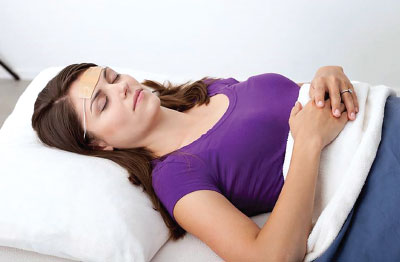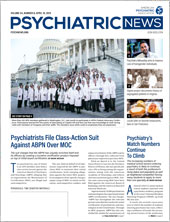Parents who are wary of giving stimulant medications to children with attention-deficit/hyperactivity disorder (ADHD) due to the side effects of the medication might soon have an alternative option. A study published in the Journal of the American Academy of Child and Adolescent Psychiatry in January suggests the noninvasive electrical stimulation treatment known as trigeminal nerve stimulation (TNS) may reduce symptoms of ADHD in children.
The trigeminal nerve connects sensory cells on the head with several brain regions involved in attention.
For this study, investigators at the David Geffen School of Medicine at the University of California, Los Angeles (UCLA) randomly assigned 62 children aged 8 to 12 with ADHD to receive four weeks of nightly stimulation with either a TNS device or sham device. The study was designed to specifically test the effects of TNS, so all the children were medication-free during the study and at least 30 days prior.
The devices were similar in appearance—a small box with wires for placement on the forehead via an adhesive patch. The only difference was the sham devices produced no electric current.
While both groups of children experienced symptom improvements after one week, the children who received the active TNS showed continued improvements over the next three weeks. In contrast, symptoms among children in the placebo stimulation group plateaued after the first week. At the end of four weeks, symptom scores in children in the TNS group fell by an average of 9 points (using the doctor-administered ADHD-Rating Scale) compared with a reduction of scores by about 4.5 points in children in the placebo group.
Overall, this 9-point reduction is less than what stimulants such as methylphenidate have shown in clinical studies, but it is on par with nonstimulant medications used to treat children with ADHD, such as the norepinephrine reuptake inhibitor atomoxetine.
Lead study author James McGough, M.D., a professor of clinical psychiatry at UCLA, told Psychiatric News that the differences seen between the two groups after the first week point to the improvements of TNS being more than just a placebo effect. But stronger validation came after analyzing electroencephalography (EEG) tests given to all the children.
“EEG measures brain wave activity, and our tests showed emphatic differences between the kids receiving active versus sham stimulation,” McGough said. He added that the brainwave changes seen in children whose symptoms improved resembled those seen in people performing well on executive function tests. This resemblance supports the idea that the EEG changes represent changes in attention and decision-making.
McGough added that the TNS was remarkably well-tolerated. There were a few instances of headache or increased appetite among TNS users, but there were no serious side effects and no children had to be taken off the devices due to side effects.
“Many parents are hesitant to give strong medications like stimulants to young children, so there has been a lot of interest from families in non-pharmacological alternatives for ADHD,” McGough said.
TNS is currently under review by the Food and Drug Administration as a treatment for pediatric ADHD. McGough noted that if approved, there can be more robust discussion about where this approach might fit in the spectrum of available treatments. He noted that more research is needed, particularly studies testing the long-term effects of TNS and studies assessing how TNS works in conjunction with medication.
This study was supported by a grant from the National Institute of Mental Health. The TNS devices were provided by NeuroSigma, Inc. ■
“Double-Blind, Sham-Controlled, Pilot Study of Trigeminal Nerve Stimulation for ADHD” can be accessed
here.

